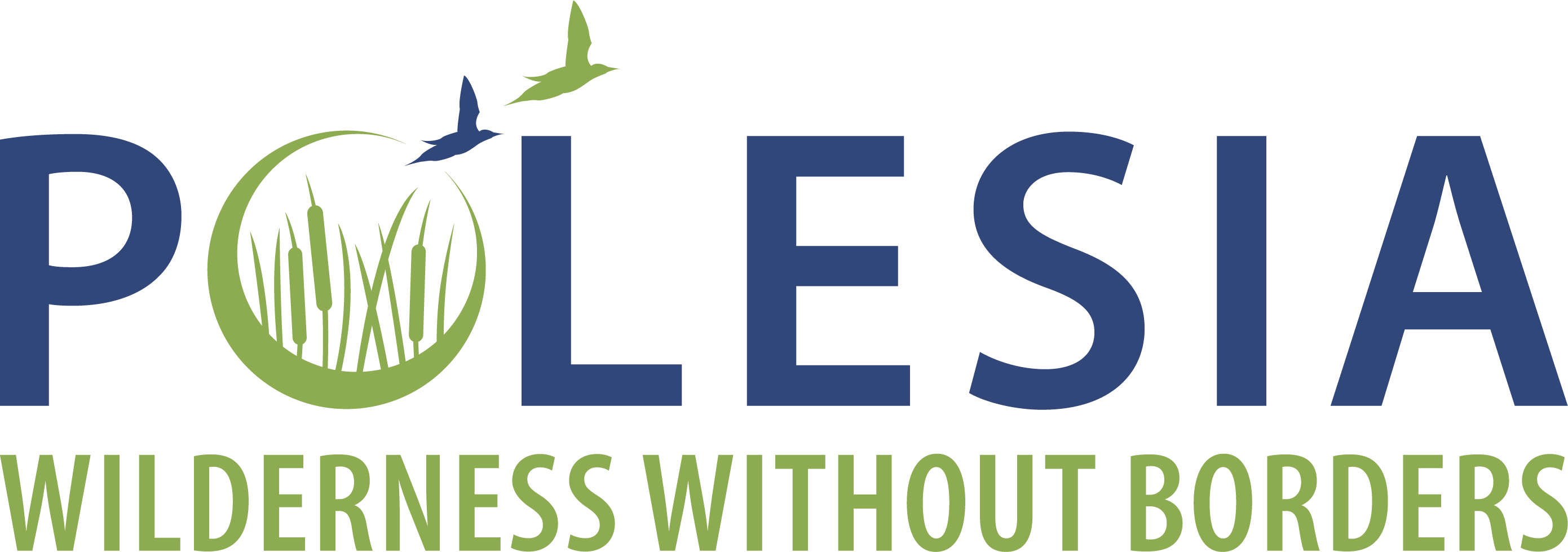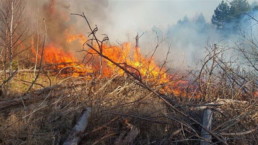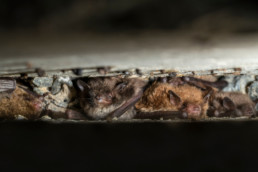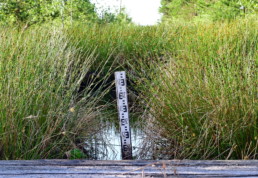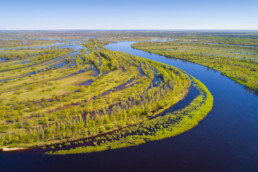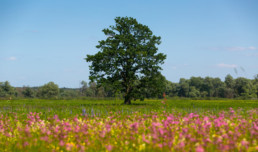The year 2022: conservation wins in a year of trials
The year 2022 was a time of bitter trials for Polesia. Once known as a territory of precious nature, it turned into a battleground during Russia’s invasion of Ukraine. As a result of the war in Ukraine, we had to revise our project since many activities became impossible in the current situation. And still, our numerous efforts undertaken in previous years bore fruit in 2022. In spite of the dramatic developments of the past year, some conservation results worth celebrating were still achieved.
Protected areas: greater size, stronger connectivity
36,000 hectares – this is the total area that gained legal protection through the creation of a new national park and a nature reserve as well as issuing protection passports for rare species’ habitat.
The year 2022 started with invigorating news: A decree issued by the President of Ukraine marked the official creation of the new Pushcha Radzivila National Park. The park protects a high conservation value area holding old-growth spruce forests, bogs and mires. Pushcha Radzivila, covering 24,265 ha , is home to more than 450 species of flora and 230 of fauna – dozens of which are nationally endangered. Among the national park’s inhabitants are Grey Cranes, Black Grouse, beavers, moose, lynx and various species of bats.
Bordering Rivnenskyi Strict Nature Reserve and Almany Mires Reserve, Pushcha Radzivila became an important link in the network of protected areas of Polesia. Through the designation of the new national park, the protection and ecological connectivity of the largest natural complex of bogs and transitional mires in Europe was enhanced.
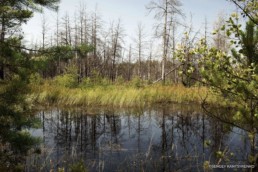
Based upon field research conducted as part of the Wild Polesia project in 2020-2021, 142 habitat sites of rare species in Polesia were placed under legal protection. Their total area amounts to 6,372 ha. Forty two species now enjoy better protection, including mammals, birds, reptiles, insects, plants and fungi. Locating and mapping the space that species need to survive and securing this habitat through the “protection passports” plays a crucial role in bringing rare species protection into effect. This procedure envisages elaboration of scientifically grounded conservation measures for each single species (and sometimes even for certain habitat sites). These measures are mandatory, and their implementation is controlled.
Meanwhile, in February, 2022, the Almany Mires Nature Reserve got a new management plan for the coming 20 years. This was preceded by months of painstaking work that resulted in the list of scientifically grounded measures on conservation and support of valuable ecosystems, and of populations of endangered species of flora and fauna, as well as ensuring sustainable functioning of the nature reserve. It is expected that these measures will mitigate or eliminate the most significant threats to the ecosystems of the Almany Mires, such as climate change, drainage reclamation, wildfires, illegal wood felling, drying up of trees, road infrastructure development, spread of invasive species of flora and fauna.
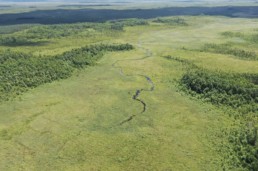
Science for Polesia: long-term monitoring in the spotlight
The natural landscape of Polesia is shaped by the Pripyat – one of the few major European rivers that are still free-flowing. Advocates for Polesia’s wilderness focus on the need to maintain the natural state of the Pripyat as a key factor for the preservation of ecosystems and biodiversity in the whole region. This message was again reinforced by a study co-authored by Pavel Pinchuk from the project published in January 2022. Summing up the results of long-term monitoring carried out from 2001 to 2020, it proves that the natural hydrological regime of rivers is extremely important for Great Snipes during their breeding season.
Competing for a mate is extremely energy-demanding for lekking male Great Snipes. Therefore, rich feeding sites in close proximity to their breeding territories are essential for maintaining good physical conditions. Up to 90% of Great Snipes’ diet is made up of earthworms whose availability depends on the water level. Low water levels allows earthworms to disperse in a deep layer of soil. While, as the water table rises, they must congregate in a narrow layer of soil close to the surface. In this case, Great Snipes have easily available prey in abundance and their physical condition improves. At the same time, a further rise of water levels associated with flooding of the Great Snipes’ feeding territories leads to a decrease of the body condition of lekking birds. This is because the earthworms leave the flooded sites; their relatively short legs also don’t allow Great Snipes to wade in deep water. Thus, the birds have to expend much more energy, flying more often and further in search of prey.
The authors of the research highlight that the natural hydrological regime of the Pripyat with seasonal water level fluctuations is important for the preservation of lowland leks of the Great Snipe and, probably, of other species of waders breeding in the floodplains of Polesia’s rivers.
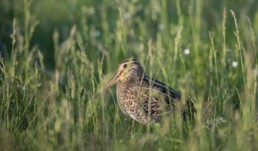
Another paper published in early 2022 looks into the unique case of wilderness restoration in the Chernobyl Exclusion Zone. The Chernobyl nuclear disaster (1986) was one of the worst man-made catastrophes in history. As a result of this tragic occurrence, in vast territories – previously densely populated and intensively used for agriculture – human activity ceased almost completely. The people who lived here up to 1986 had to relocate, the farmland was abandoned, and drainage canals were locked to prevent the spread of wildfires and contaminated water. As a result, a unique case of unguided nature restoration developed.
The long-term dynamic monitoring of landcover conducted in the Chernobyl Exclusion Zone from 1999 to 2017 shows an impressive increase in wetland and forest areas. In parallel to this, species’ composition and population numbers changed too. The monitoring of diurnal birds of prey carried out from 1998 to 2019 proved that the Greater Spotted Eagle and the White-tailed Eagle – both wetland specialists sensitive to human disturbance that had been locally extinct in the study area – returned, and their numbers increased. At the same time, the scientists observed decreasing populations of birds of prey that prefer hunting in farmland. Interestingly, at the beginning of the monitoring, the population sizes of these species in the Chernobyl Exclusion Zone were much higher than the regional average.
The study’s authors concluded that passive rewilding can bring European lowlands back to a near-natural state – at both an ecosystem and a biodiversity level.
Mapping the Polesia landscape
Another achievement by our scientists in 2022 is the elaboration of the first bespoke landcover map of the whole of Polesia. This became possible due to the meticulous work on bringing the results of large-scale field surveys into correlation with the data provided by a pair of Sentinel satellites. Google Earth Engine is used for information processing. The map identifies a set of landcover classes that can be detected from the satellite’s orbit, like farmlands and urban territories, water, deciduous and coniferous forests, meadows, bogs and mires. The tool allows experts to carry out various environmental analyses. For instance, the map enables dynamic monitoring of restoration or degradation of natural areas, changes in land use, and analyzing the intensity of seasonal floods in Polesia. The tool can also be of use for assessing landscape connectivity, mapping species distribution, or protected areas enlargement.
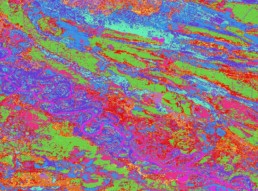
We hope that the year 2023 will be more favorable for one of largest and most valuable natural landscapes of Europe and its people. And we enter the new year eager to keep on working for the benefit of Polesia’s wilderness and the communities that call this impressive landscape home.
